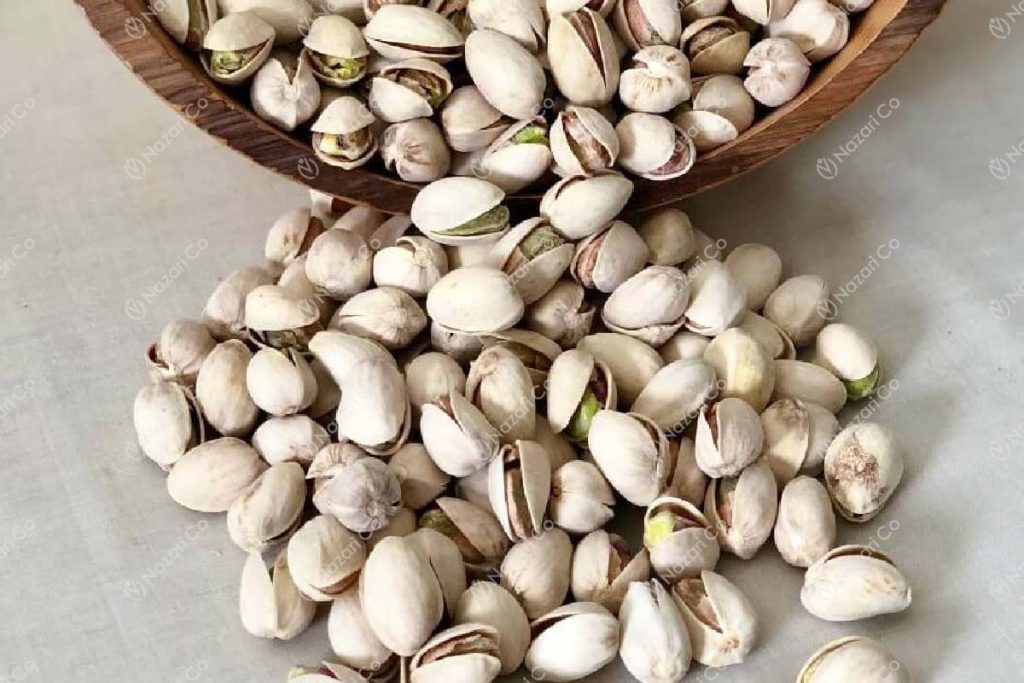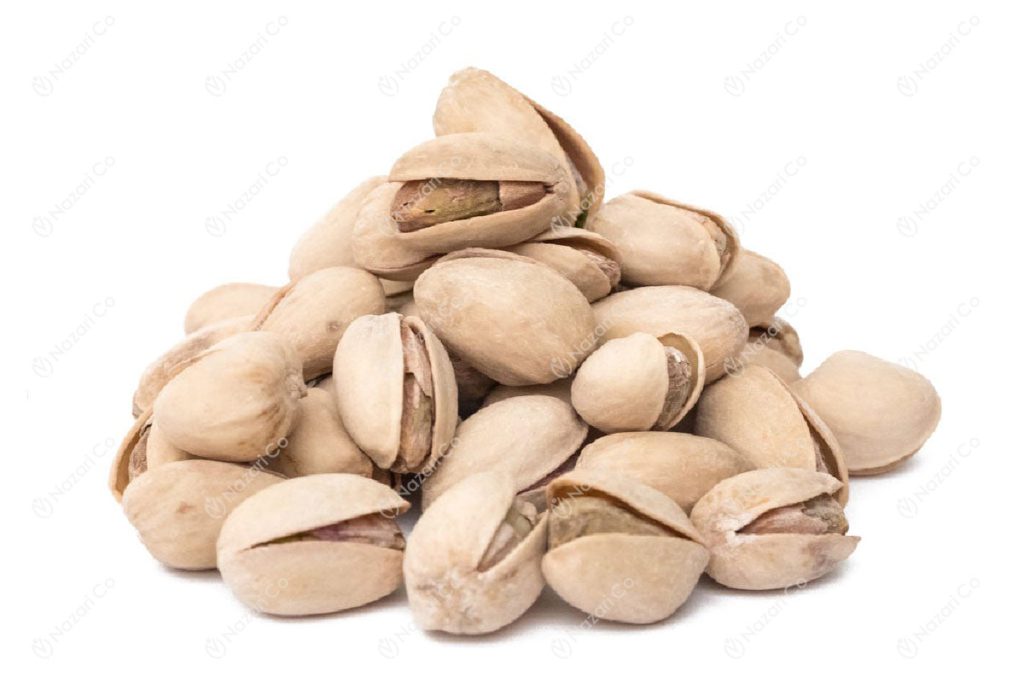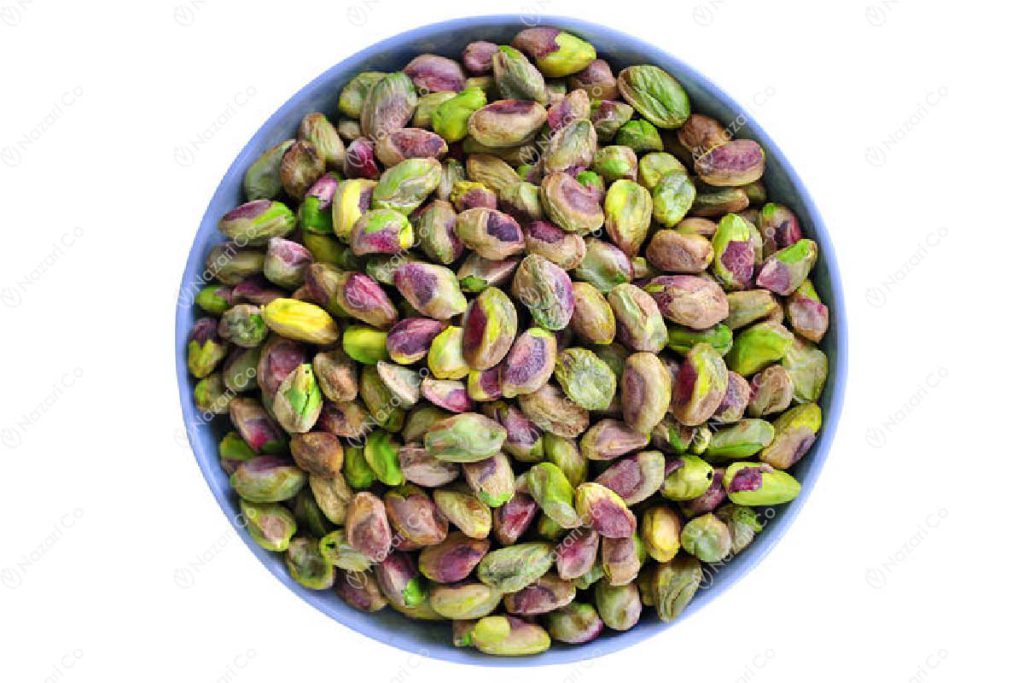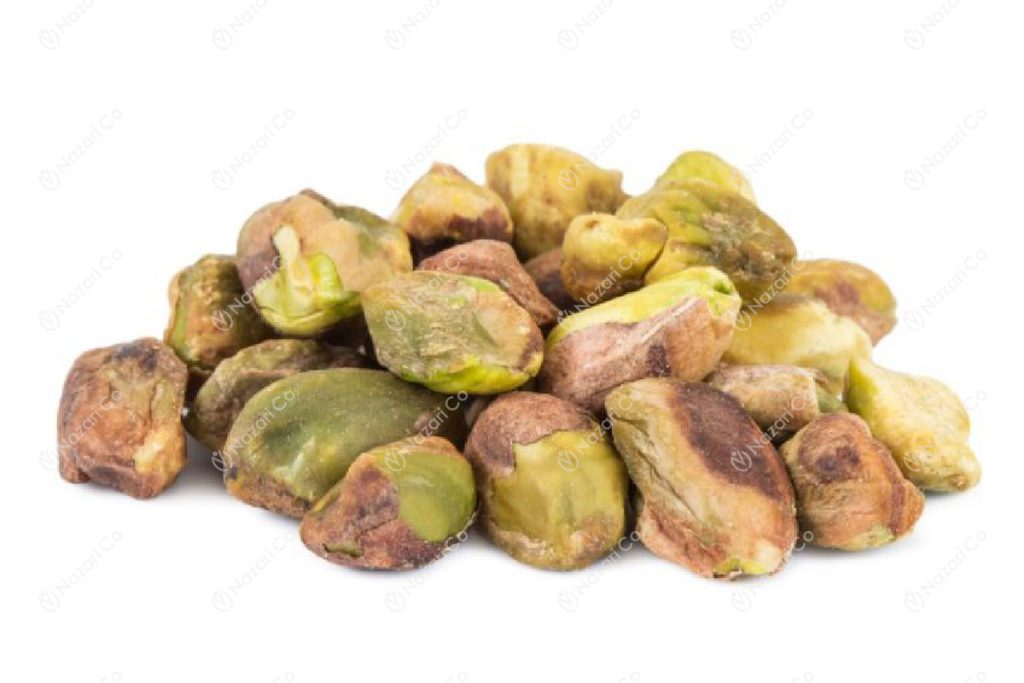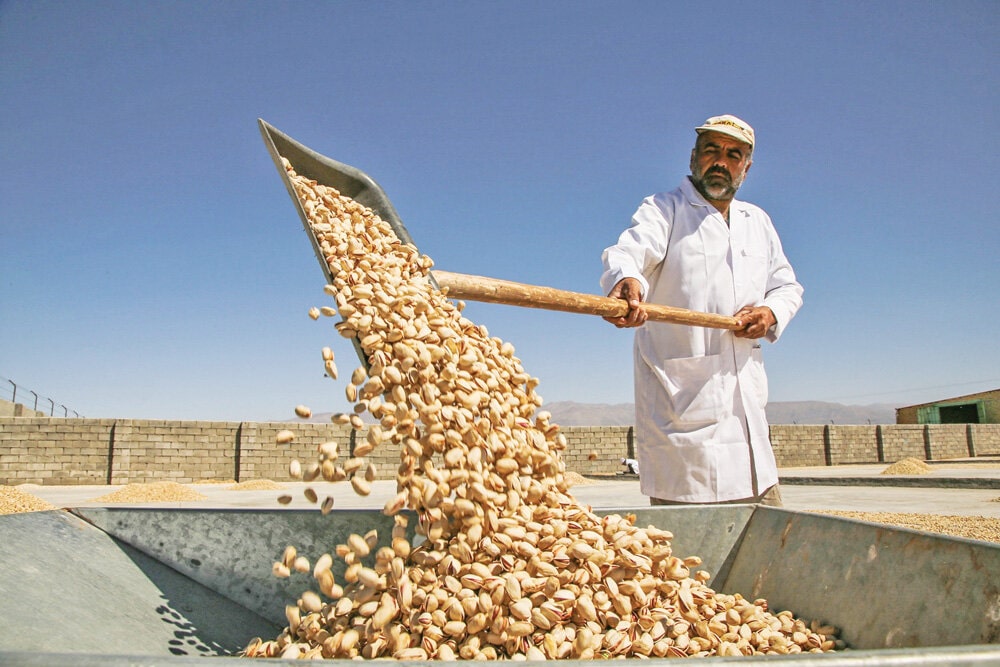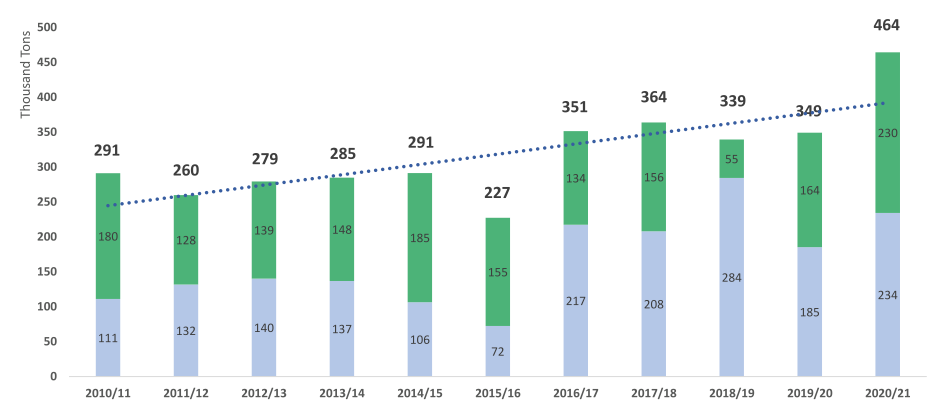What Are The Different Types of Pistachios?
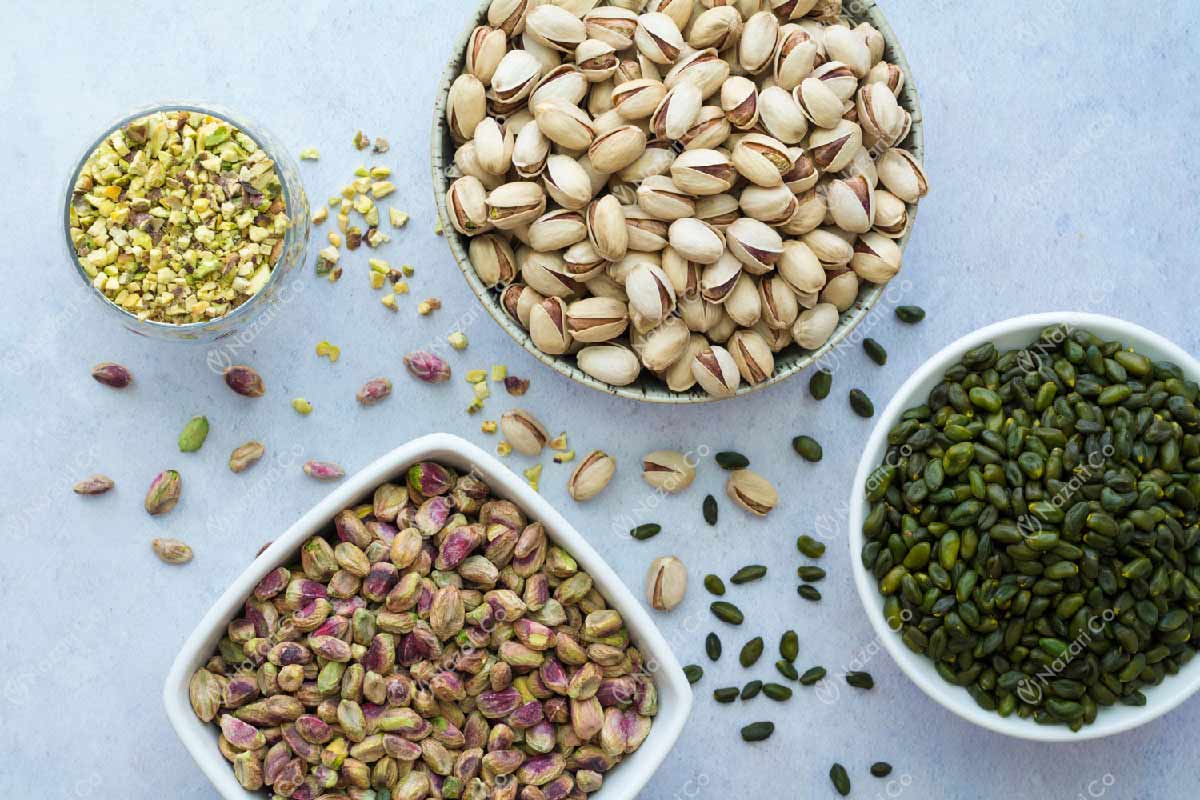
There are different types of pistachios in the world. Generally, they are classified according to their place of origin. Each country has its own types; the main differences are the color, flavor, size, period of harvesting, and qualities.
Iran is one of the main producing countries globally. Iranians are proud of their broad range of pistachio types and each of them has its own special and unique flavor and characteristics.
What are the Types of Iranian Pistachio?
Pistachio is one of the most popular nuts in Iran and all around the world. The varieties of pistachio cultivated in Iran belong to the domestic species with the scientific name of Pistacia Vera. Iran has more than 70 cultivars and genotypes of female pistachios and a large number of male genotypes. The most famous types of pistachios in Iran are Kalle Ghoochi, Akbari, Ahmad Aghaei, and Fandoghi.
different varieties of iranian pistachios based on shape
Iranian pistachios can be classified based on various criteria. In a more general division, different types of pistachio are divided into four groups according to their shape and size:
- Round: The shape of the fruit is spherical and the degree of openness of the shell – called the smile of the pistachio – is very high. The surface color of the kernel is purple and the color of the skin is cream. Right now, about half of all pistachios are considered round pistachios.
- Jumbo: Its fruit is hazelnut-shape and has a medium smile percentage. Its kernel has red-gray core color and its skin has bone-white color with medium opacity.
- Long: The shape of an elongated rectangular fruit (almond) with a high degree of openness of the shell. The color of its core is purple and the color of the bone skin is very light.
- Super Long: The fruit is almond-shaped and has a high degree of openness of the shell. The surface color of the kernel is purple-brown and the bone skin color is dark cream.
Fandoghi cultivar is classified in the round group. Ahmad Aghaei cultivar is classified in the long group, Kalle Ghoochi is in the Jumbo group, and Akbari is considered a super long pistachio type.
iranian pistachio types based on Flowering time
In the second division, pistachios are classified into three groups and it is based on their flowering time:
- Early flowering
- Medium flowering
- Late flowering
For example, Kalle Ghoochi is grouped in early flowering, Ahmad Aghei cultivar is in the medium flower group and Akbari type is grouped in the late flowering group.
pistachios could be classified based on harvesting time
In the next classification, pistachio types are divided into five groups in terms of product ripening:
- Very early: Harvesting time until 31 August
- Early: Harvesting time from 1 to 10 September
- Medium clay: Harvesting time from 11 to 20 September
- Late ripening: Harvesting time from 21 to 31 September
- Very late ripening: Harvesting time from 1 to 10 October
For example, Kalle Ghoochi is grouped in early flowering, Ahmad Aghaei cultivar is in the medium flower group and Akbari type is grouped in the late flowering group. For the late flowering group, the flowering date starts on 21tst April and, ends on 26th April (The flowering period is 11 days). For the early group, the beginning of flowering time is on 10th April, and the full flowering stage is on 16th April (the flowering period is 13 days).
Also, each type can be classified into three groups:
- Naturally Opened Shell Pistachio
Once riped, pistachio kernels get on their biggest level of size and they naturally crack open. This will make it easy to peel them in a low-temperature process. This type has up to 55% kernel to shell ratio.
- Mechanically Opened Shell Pistachio
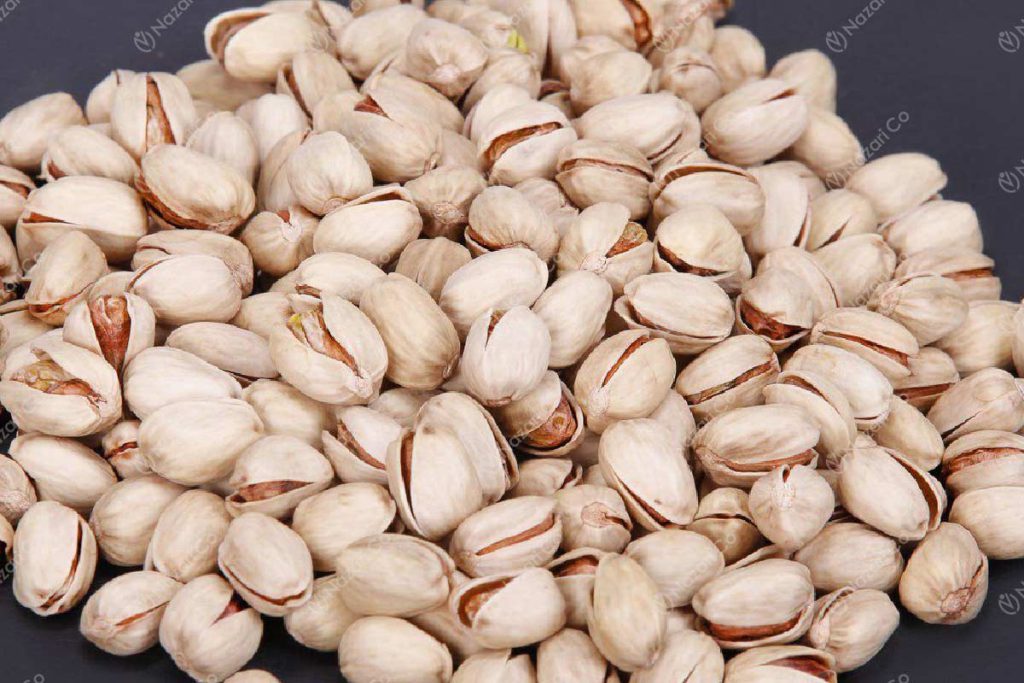
Some pistachio processors use machines to artificially open the pistachio shells while they are not fully ripe. These kernels might not be as large as the natural ones because they are not that ripe to open the shells naturally. That means they are usually smaller.
- Closed Shell Pistachio
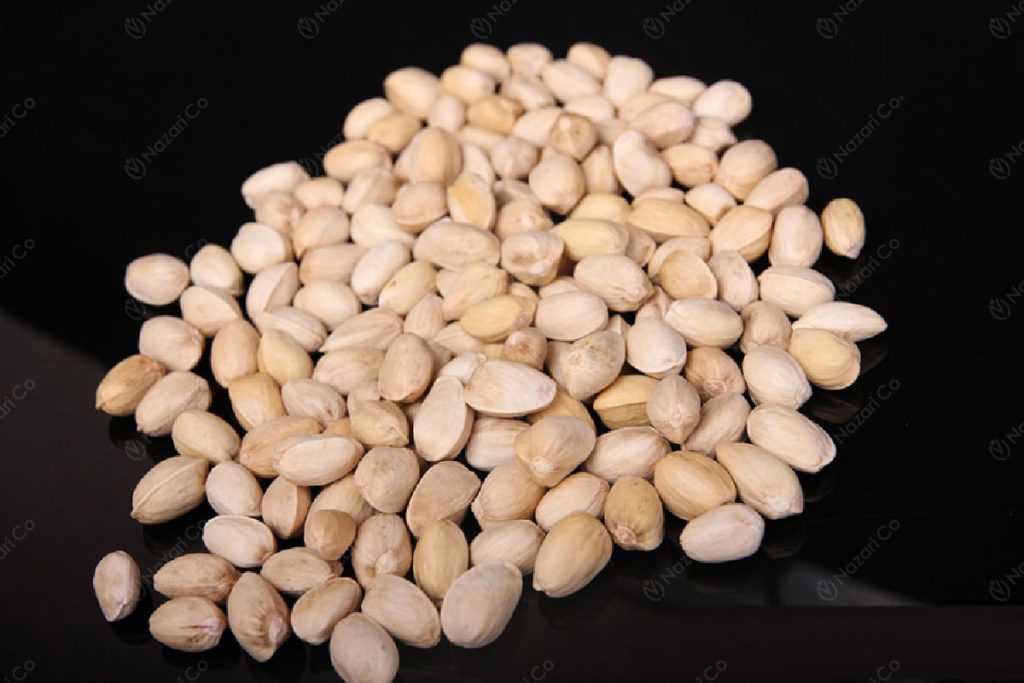
This kind of Iranian pistachio is naturally closed and has not opened yet. Throughout the process of peeling the hard-shell, closed-shell pistachios grow natural kernels by a mechanical procedure. All types of pistachios have closed shell-type too.
Different Forms of Iranian Pistachio
Iranian pistachios are offered in different forms such as shelled, unshelled, raw, and roasted. Each form has its fans and according to your interests, you can purchase any of them.
Shelled vs. Unshelled pistachio
Shelled pistachios are more economical to purchase because you only pay for the weight of the kernels.
The price of shelled pistachio is indeed higher because of the shelling process they are going through. But, by comparing the weight of the kernels and the price we pay per kilogram, you understand that you actually pay less for shelled pistachio rather than unshelled pistachios.
Also, Shelled pistachios are easier to eat, but we can say that some people enjoy cracking the nuts open.
Shelled pistachio which is also known as pistachio kernel is obtained from both open and closed-shell pistachio.
Raw vs. Roasted pistachio
Raw and roasted pistachios are also very popular, but it has always been a question that which one of these two forms of pistachios should we eat? The answer is both. Why?
Raw In Shell Pistachio Roasted In Shell Pistachio
Both raw and roasted nuts are good for your health. There are similar amounts of calories, protein, carbs, and fiber in both varieties. However, roasting nuts can damage their healthy fat, reduce their nutrient content, and form a harmful substance.
Raw Shelled Pistachio Roasted Shelled Pistachio
On the other hand, raw nuts are more likely to contain harmful bacteria such as salmonella than roasted nuts. These risks, however, are low. Also, how nuts are roasted can greatly affect their nutrient content. If you want to roast them on your own, keep the temperature relatively low for 15 minutes at around 140 ° C.
Different Types of Shelled Pistachios
Pistachios undergo through shelling process to obtain pistachio kernels. Pistachio kernel is the edible part of the pistachio and is offered in different forms. The most common types of Iranian pistachio kernels are:
This kernel is the first product produced in the processing of pistachio – which is the break of closed-shell pistachio. The skin of this kernel is yellowish-purple which contains antioxidants. The skin protects the kernel from turning yellow.
Kaal kernels are obtained from pistachios that are not fully ripe yet. This type of kernel is harvested one month earlier in July or August. Kaal pistachio kernel is one of the best export products of Iranian pistachio. Because of its green color, oil and fabulous flavors are exported all over the world.
These kernels are obtained from Kaal pistachio kernels. During this process, pistachio shells should be removed. To do this, before being shelled, Kaal pistachios have to become dry in the sun for several days. After that, the softened seed peel should be removed to obtain the fresh, green, and delicious kernel of pistachio. These kernels are classified based on the intensity of their green color. The kernel which has the darker green color has the higher price.
Popular Products from Iranian Various Forms of Pistachios
Pistachio Oil
Compared to other nut oils, pistachio oil has a particularly strong flavor. Pistachio oil is rich in vitamin E, saturated fats, monosaturated fats, and omega-3 fatty acids. These nutrients can help maximize our heart health. Also, due to the benefits that vitamin E has for the skin, skin-care manufacturers add pistachio oil to the lotions and serums.
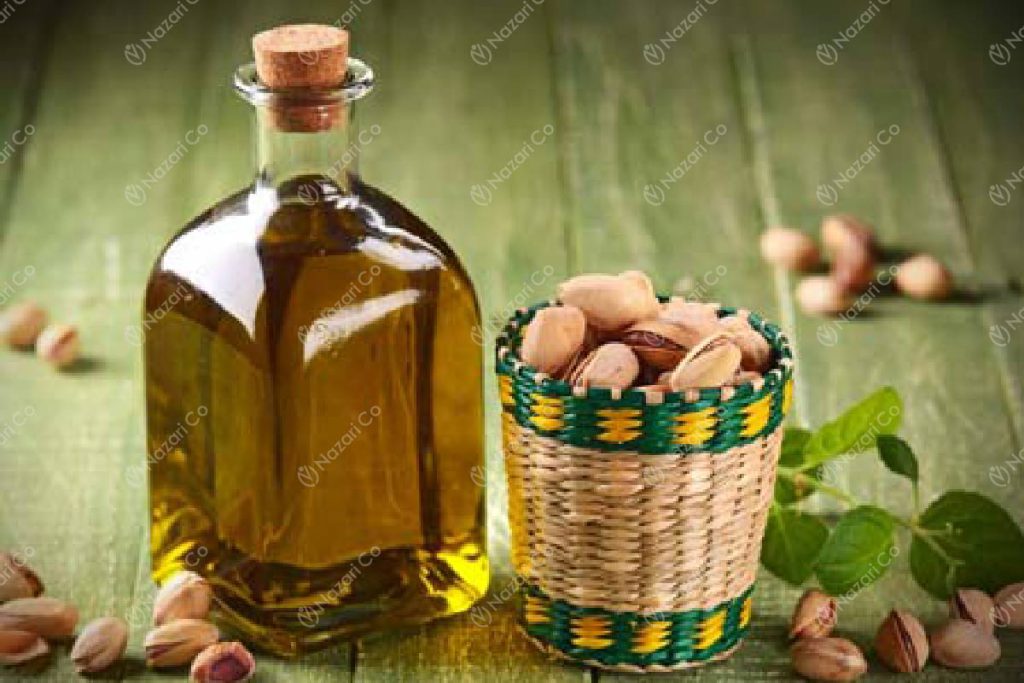
Another usage of pistachio oil is in the food industry. Some chefs use pistachio oil when cooking pasta to give their dishes a nutty flavor. It can also be added to sides like risotto or rice to give it a rich, nutty flavor. Others add pistachio oil for making cooked vegetables or meat in place of butter or margarine. Finally, this oil can be used for baking bread or muffins for creating a very special flavor.
Pistachio Paste
Pistachio paste is a popular food product produced from milling and roasting raw pistachios. Pistachio paste is made from 100% natural pistachio kernels. It is healthier than pistachio butter as it is less oily and contains no salts, sugar, or other ingredients. It is called paste because the pistachio oil is not removed during its production process, and the fat of the product is wholly kept.
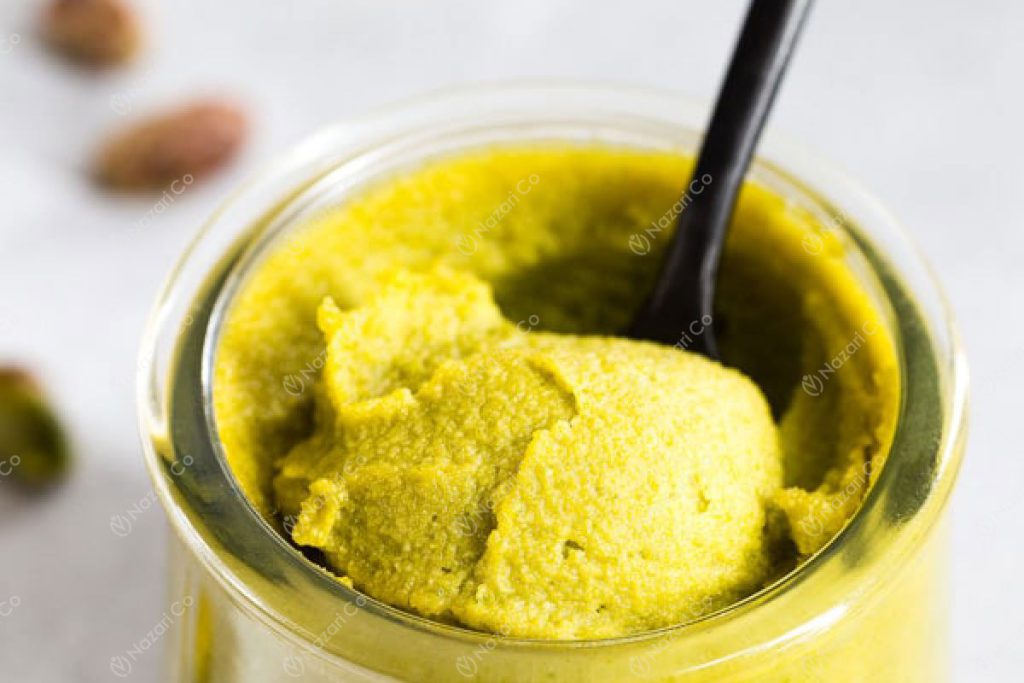
Pistachio paste has is very versatile in the food industry. It is an excellent choice for flavoring muffins, cakes, and all types of desserts as it is sugar-free. It is full of fiber and essential minerals, including iron, magnesium, calcium, and potassium.
Pistachio pastes add creaminess, heart-healthy fats, fiber, and protein to the recipes. These properties are rarely found in regular nut butter and recipes. We suggest you use this tasty paste in your recipes, as they can serve as a healthful way to add richness to any dish or a satisfying snack on their own.
Pistachio Powder
This product is made from shelled pistachios that are ground into powder during a standard process. Using it in foods, desserts, cakes, and pastries can create a wonderful taste.
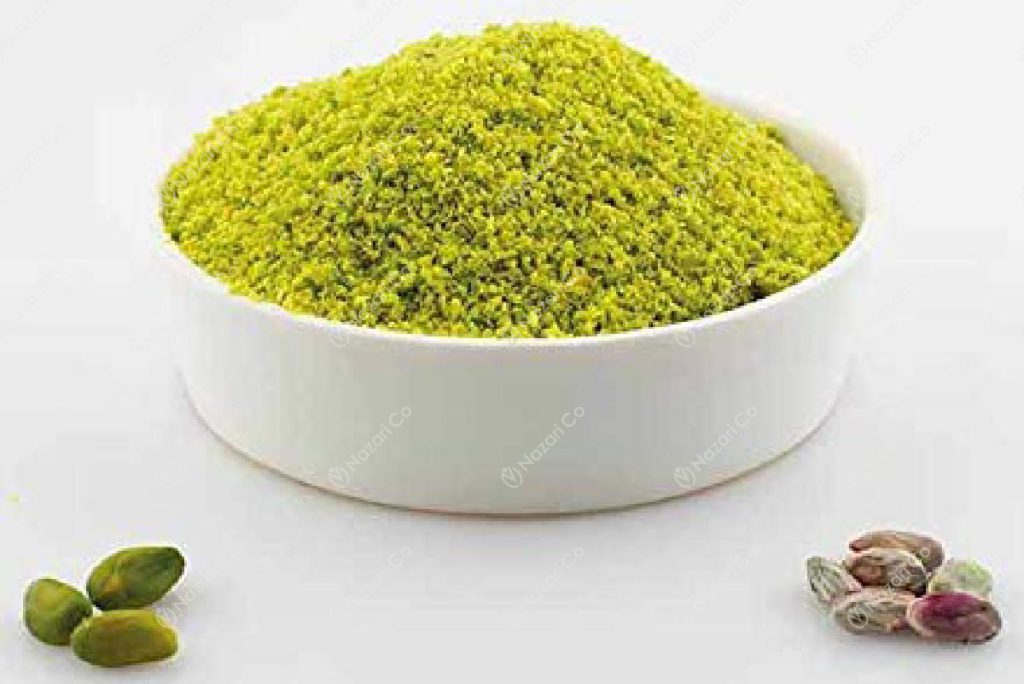
Pistachio powder is mostly used in the confectionery industry. This type of powder is used in the production of sweets like:
· Pistachio sweets
· Ice cream
· Dessert
· Porridge
· Sohan
· Gaz
To wrap it up!
Pistachio is a very delicious nut with many nutritional values. There are many types of this nut worldwide and each of them has its own characteristics. If you want to make the best choice make sure you know the different pistachio types.
Nazari Pistachio co. is one of the leading companies in the field of cultivation, processing, supply and export of various types of pistachios from the top orchards in Iran; If you need such products, you can contact us.

